Mahakumbh 2025 is the world’s largest religious gathering, drawing millions of devotees from across the globe. Mahakumbh is not just a festival; it is an experience that transcends boundaries and unites millions of devotees in a quest for enlightenment. Held every twelve years in different cities across India, it is considered one of the most significant events in Hinduism. This holy pilgrimage is believed to wash away sins and offer spiritual rejuvenation.
In this blog, we will explore the historical and cultural significance of Mahakumbh, highlighting the rituals, traditions, and legends associated with the event. We will discover the importance of sacred baths in the Triveni Sangam (holy rivers) and the mesmerizing processions of Naga sadhus and saints.
Recognizing its profound impact, UNESCO inscribed Kumbh Mela in 2017 on its Representative List of Intangible Cultural Heritage, acknowledging it as the world’s largest peaceful spiritual congregation, where tradition, faith, and humanity converge in a grand spectacle of devotion.
Whether you’re a seasoned pilgrim or a first-time curious traveler, this guide will equip you with the essential knowledge to make the most of your Mahakumbh2025 experience. The information here will help you navigate the bustling crowds, find the best accommodations, and immerse yourself in the soul-stirring spiritual atmosphere. Join us on this spiritual journey as we uncover the wonders of Mahakumbh2025 and embark on this mystical journey of faith, devotion, and self-discovery.
The significance of Mahakumbh
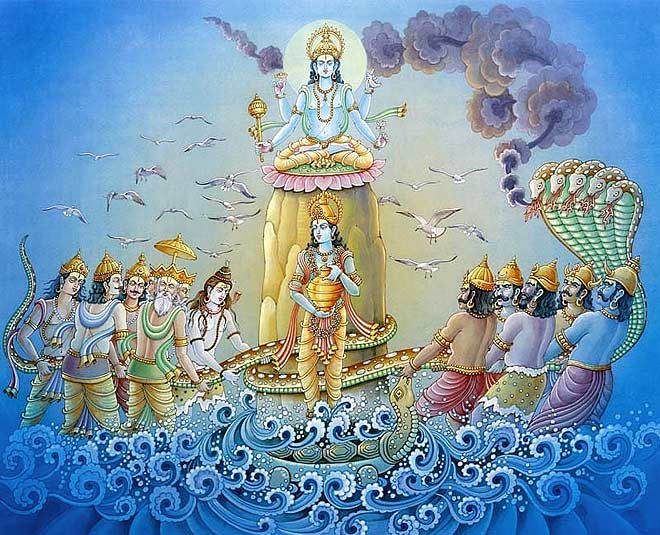
The Mahakumbh (occurs after 144 years), often referred to as the Kumbh Mela (occurs every 12 years), has a rich history that dates back thousands of years. Its origins are deep-rooted in ancient Indian scriptures and are profoundly interwoven with Hinduism’s spiritual fabric. The Sanskrit word ‘Kumbh’ means pitcher or pot and ‘Mela’ means gathering. According to legend, the festival commemorates the churning of the ocean (Samudra Manthan) in search of divine elixir, the nectar of immortality (Amrit).
During the celestial event, Sri Vishnu, one of the three supreme deities (Trimurti) of Hinduism, advised the Devas (Gods) to obtain the nectar of immortality (Amrit) from the Ksheer Sagar (Ocean of Milk), to regain their strength, power, and divine qualities to win over the Asuras (Demons). During Samudra Manthan, Mountain Mandrachala became the churning stick and Nagraja Vasuki acted as a rope. The Sanskrit word ‘Nagraja’ means king of snakes. Sri Shiva wears Nagraja Vasuki around His neck. Mountain Mandrachala began to sink when it was placed in the ocean. Sri Vishnu took the form of Kurma (turtle) to provide a base for the mountain Mandrachala, as the deities feared that the mountain might submerge in the ocean. Asuras demanded to hold the head of Vasuki, and the Devas agreed to hold the tail of Vasuki for the churning of the ocean.
During the Samudra Manthan, the first to emerge was poison known as ‘halahala’. This terrified the Devas and Asuras, as the poison was so lethal it could destroy the cosmic creation. Sri Shiva consumed the poison to save the three worlds: the earthly realm (Bhuloka), the heavenly realm (Svargloka), and the netherworld (Patal loka). The halahala gave a blue hue to His throat, and from then on, Shiva is known by the name ‘NeelKantha’ (blue-throated one; Neel means blue and Kantha means throat in Sanskrit).
As the devas and asuras continued churning the ocean, many valuable and divine objects were immersed. These were the fourteen ratnas (gems), Goddesses – Sri Lakshmi, Varuni and the Apsaras, Supernatural animals – Kamdhenu (the wish-granting cow) and the Uchhaishravas (the seven-headed horse); Kaustubha (the divine jewel); Sharanga (the divine bow); Parijat (the divine flowering tree); Kalpavriksha (the divine wish-fulfilling flowering tree); and Dhanvantri holding Amrit Kalash (Dhanvantri is the Hindu deity of medicine and ayurveda). There are variations in the description of the Samudra Manthan event in the Puranas. Some texts mention the emergence of Alakshmi (Goddess of misfortune), Panchajanya (Sri Vishnu’s conch), divine umbrella and earrings, and Nidradevi (Goddess of sleep).
In epic tales, when the Amrit Kalash (pot of elixir) emerged from the ocean, Jayanta, son of Indra (God of the Heavens), snatched the pot filled with divine nectar. Noticing this, Sukracharya (Guru of the Asuras) warned the Asuras to chase Jayanta. Jayanta carried the Amrit Kalash and ran for twelve days to stop the Asuras from getting the Amrit Kalash. This pursuit lasted for twelve days of Devas, equivalent to twelve human years. During these twelve days of a cosmic struggle, drops of Amrit fell over Haridwar, Prayagraj, Nashik, and Ujjain. So, these pilgrimage locations are considered sanctified and hold immense spiritual and mystical powers. It is at this time, that the Sun, the Moon, and the Planets reach a unique astrological alignment during which Kumbh Mela is held.
At a spiritual level, this celestial event of Samudra Manthan is symbolic of churning of our minds to delve deeper into ourselves, getting connected to our inner-self, from where all the powers and positive attributes arise, eventually leading to our liberation and salvation.
The normal Kumbh Mela is held every 3 years, the Ardh (Half) Kumbh is held every six years, Purna (complete) Kumbh takes place every twelve years and the Mahakumbh Mela, is celebrated after 144 years (after 12 Purna Kumbh Melas).
This festival is believed to provide spiritual benefits, purifying the soul and washing away sins through the sacred act of bathing in holy rivers. This transformative experience is central to the beliefs of many Hindus, who see Kumbh Mela as an opportunity for spiritual rejuvenation and salvation.
Auspicious Dates for Holy Bath (Shahi Snan) at Triveni Sangam
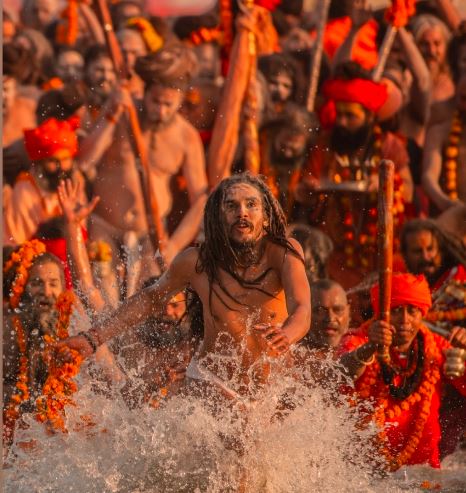
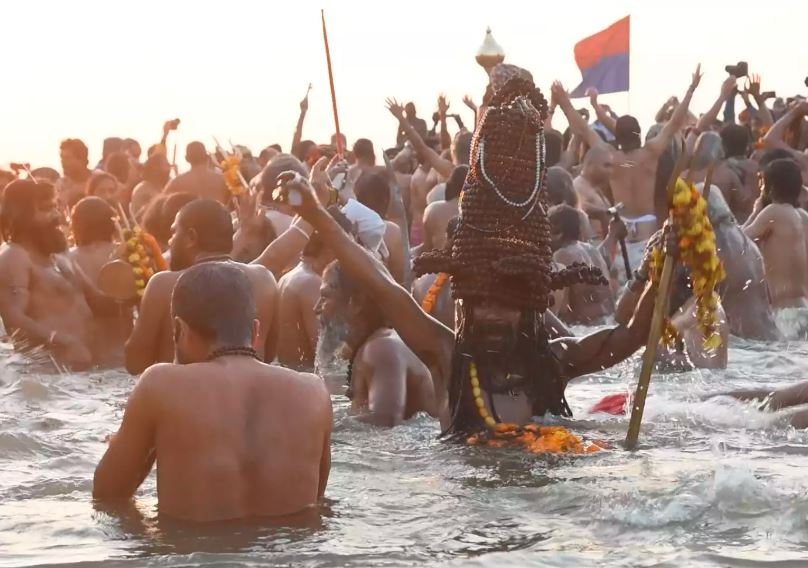
This year, Mahakumbh is set to take place in Prayagraj, a city historically significant for its spiritual heritage and as a confluence of three rivers – Ganges, Yamuna, and the mythical Saraswati. This confluence of three rivers is considered highly sacred in Hinduism and is known as Triveni Sangam. The Sangam is the focal point of Kumbh Mela and is considered as ‘Tirtha’, the crossing point between earthly and divine realms.
‘Shahi Snan’ meaning holy bath is an integral ritual of Kumbh Mela. It is believed that taking a dip in the holy rivers of Triveni Sangam during the Kumbh cleanses one’s soul of all past sins, bestowing devotees with Moksha.
The Sanskrit term ‘Moksha’ signifies liberation, freedom, or release. It is a central philosophy in Hinduism, Buddhism, Jainism and Sikhism. The ideology of Moksha is about the ultimate goal of human existence, which is liberation from the cycle of birth, death, and rebirth (samsara). It is connected to self-realization, spiritual enlightenment, and union with the divine.
For those planning to attend Mahakumbh 2025, it is essential to keep an eye on the specific dates for the Shahi Snan.
What are the important dates for Shahi Snan in Prayagraj Mahakumbh Mela 2025?
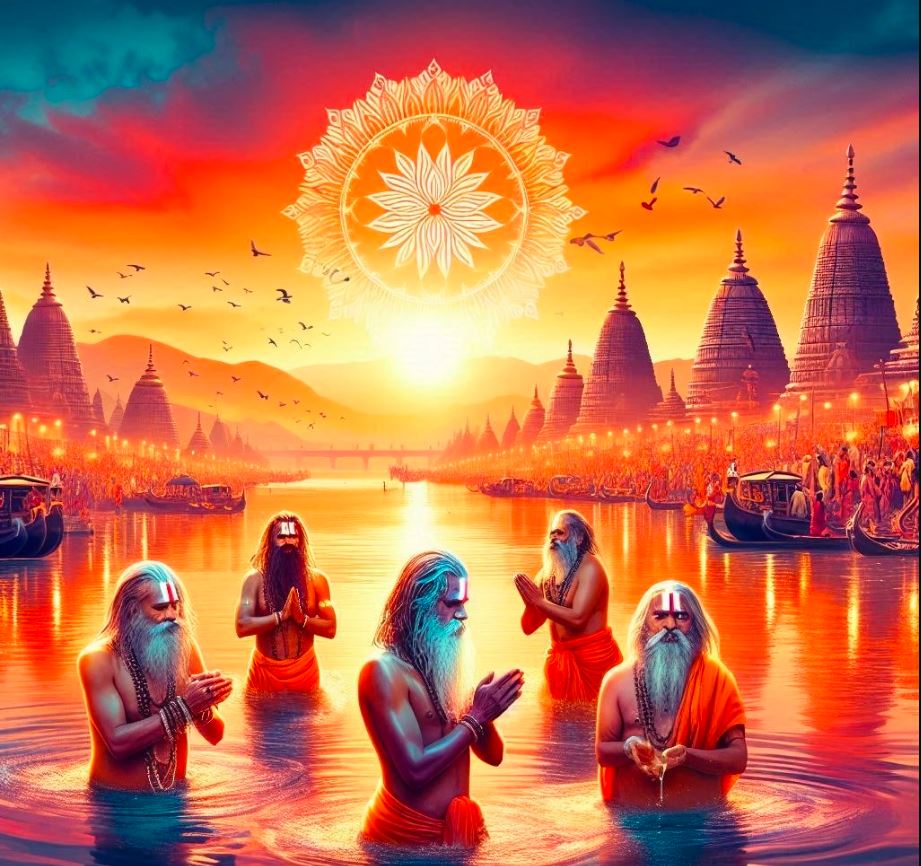
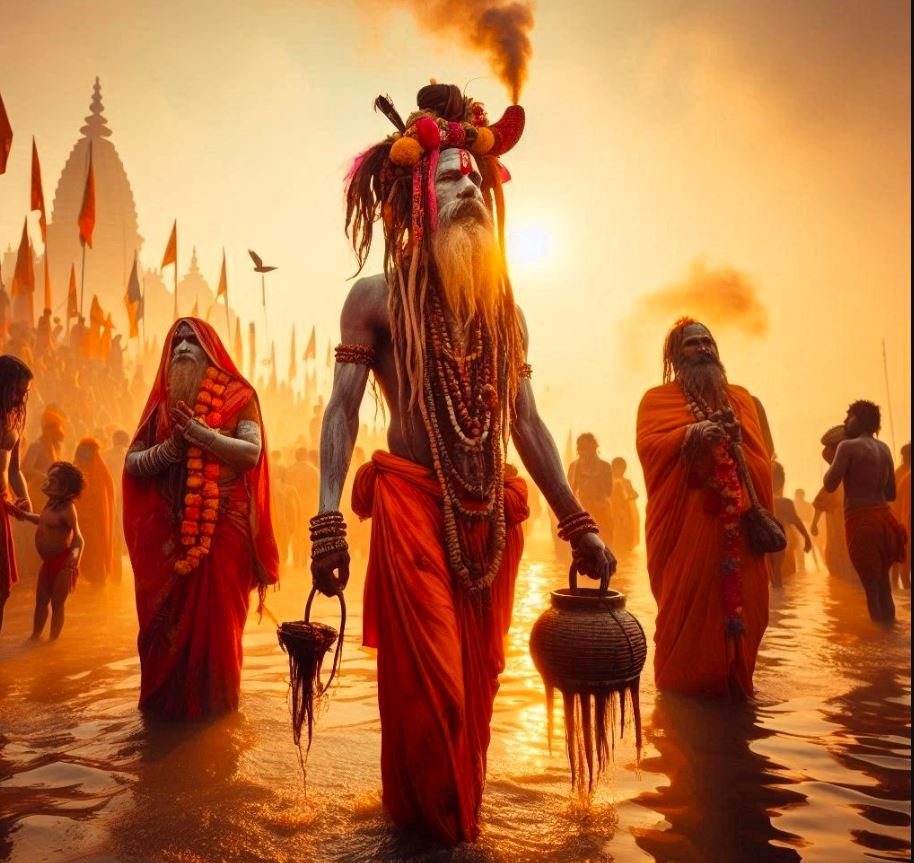
The key dates for the Shahi Snan in Mahakumbh 2025 include the Makar Sankranti, Mauni Amavasya, Basant Panchmi, Maghi Purnima, and Maha Shivratri, each holding its own spiritual significance.
Paush Purnima Snan: Paush purnima on 13th January 2025 marks the beginning of Mahakumbh mela. Purnima means full moon and paush is the tenth month of Hindu calendar. It is believed that devotees who take religious bath in the holy waters on this day are freed from their sins.
Makar Sankranti Snan: Makar Sankranti is celebrated on 14th January 2025, immediately after Paush Purnima. Makar Sankranti is the day with Sun begins its northward journey and in the spiritual journey, this transition is observed as leaving behind darkness and welcoming light and positivity.
Mauni Amavasya Snan: This year, Mauni Amavasya is on 29th January 2025. It is believed to be the most sacred days for the Shahi Snan (auspicious bath). Mauni in Sanskrit means silence, it is believed that on this day, the Universe absorbed the first primordial sound of ‘Om’. Many sages and sadhus observe silence and meditate on the riverbanks on this day.
Basant Panchami Snan: Basant Panchami will be celebrated on 3rd February 2025. It marks the augment of spring season. Maa Saraswati, the Goddess of Knowledge is worshipped on this day. Shahi snan on this is believed to grant devotees wisdom and enlightenment.
Maghi Purnima Snan: This year, Maghi Purnima is on 12 February 2025, on a full moon day in the month of Magh. It is believed that the Shahi Snan commemorates the day when Aryan race settled along the banks of holy rivers.
Maha Shivratri Snan is on 26 February 2025. Maha Shivratri is dedicated to the worship of Lord Shiva. Shahi Snan is considered auspicious on this day as it is believed to purify one’s soul and spirit by taking a dip in the holy rivers.
Mahakumbh Mela 2025 Dates For Holy Bath
| Auspicious Days | Dates |
| Paush Purnima Snan | January 13, 2025 |
| Makar Sankranti | January 14, 2025 |
| Mauni Amavasya | January 29, 2025 |
| Basant Panchami | February 3, 2025 |
| Maghi Purnima | February 12, 2025 |
| Maha Shivratri | February 26, 2025 |
For the devotees who visit the Kumbh Mela, it’s not just about the holy bath but much more of an unforgettable spiritual experience. On the days of Shahi Snan, the atmosphere is filled with numinous energy in the presence of the confluence of three holy rivers, the pulsating chanting of mantras and sacred hymns, the grand processions of saints and various akharas and naga sadhus, and the ethereal sounds of bells and conch shells resonating with the energy of the divine realm. The confluence of these events creates a unique and mystical atmosphere that embodies the essence of Mahakumbh.
What are the rituals and practices at Prayagraj Mahakumbh Mela?
The rituals and practices at Mahakumbh are deeply embedded in Hindu traditions and hold profound spiritual significance for devotees. The integral ritual of the event is the Shahi Snan in the sacred rivers, where devotees believe that immersing themselves in the holy waters can cleanse them of sins and lead to moksha (liberation). Each day of the festival is marked by specific rituals, with the Shahi Snan being the most prominent. During these days, various akharas (monastic orders) take part in grand processions before bathing in the rivers, symbolizing their spiritual authority and connection to the divine.
Apart from the holy dip rituals, the Mahakumbh is also a time for prayer, meditation, and listening to spiritual discourses. Many spiritual leaders and gurus set up ashrams where they offer teachings, discourses, and guidance to seekers. Attendees participate in chanting, singing devotional bhajans, and engaging in collective prayers that create a deeply immersive spiritual atmosphere. The air resonates with the sounds of mantras and hymns, fostering a sense of unity and connection with the divine.
Who are the Sadhus and Naga Sadhus at the Mahakumbh?
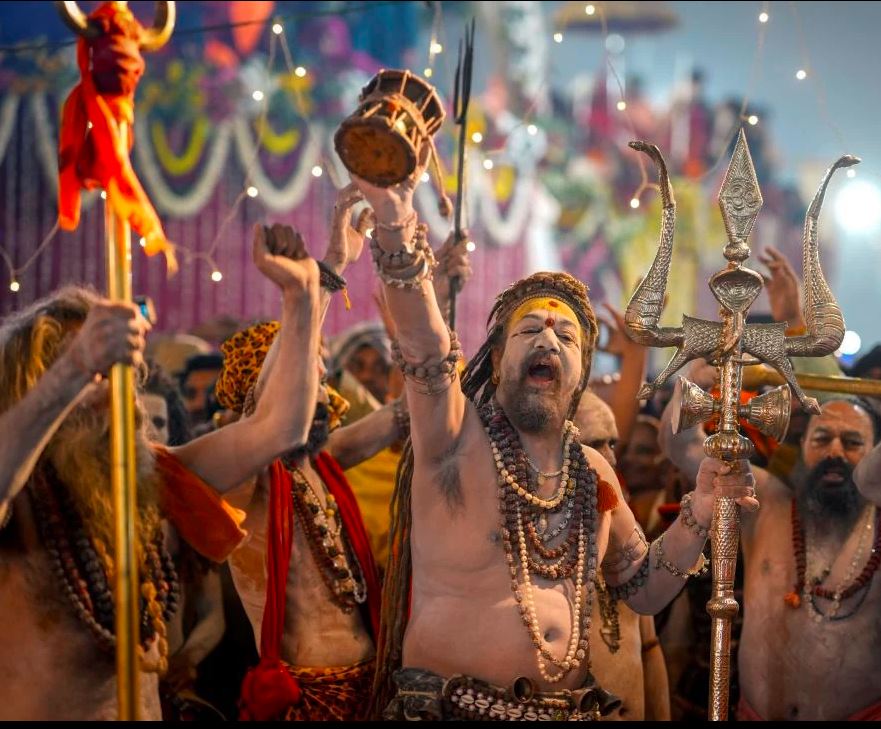
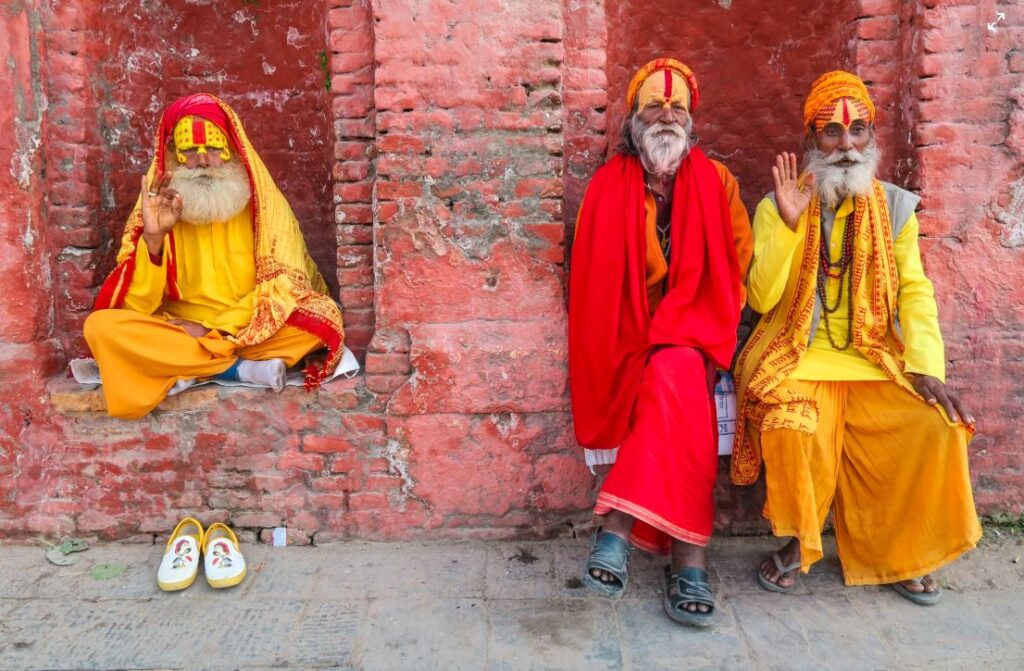
Beyond the spiritual rituals, Mahakumbh2025 offers attractions and activities that cater to visitors seeking both spiritual knowledge and enlightenment. One of the most captivating aspects of the festival is the grand processions of the Akharas. Religious and spiritual Akharas are monastic institutions associated with Hinduism and are primarily composed of ascetics (sadhus). They are traditionally linked to various religious sects and are organized into groups or orders called sampradaya.
Holy men of the Kumbh Mela include saints, sadhus, naga sadhus, aspirants-kalpavasis, and visitors. The presence of Sadhus and Naga Sadhus—Hindu ascetics who have renounced worldly life to pursue spiritual enlightenment and attain moksha are the hallmark of Mahakumbh. The key differences between the sadhus and the naga sadhus lie in their way of life, practices, and spiritual focus.
Sadhus usually wear saffron, or white robes, have long beards, and often carry Kamandalu (water pot). They live in ashrams, caves, or temples. Devotional practices include meditation, yoga, and worshipping deities. They are often followers of Shaivism (devotees and followers of Lord Shiva), Vaishnavism (devotees and followers of Sri Vishnu), and Shaktism (devotees and followers of Goddess).
Naga Sadhus as the same suggests are naked warrior ascetics. They are mainly followers of Shaivism, known for their extreme renunciation and discipline. They live naked, or with minimal clothing and are usually covered in ashes. They have long matted hairs and wear Rudraksha beads. They follow the monastic warrior akharas to protect Hinduism. Naga sadhus perform extreme penances and are known for tough spiritual and physical training and warrior-like discipline.
Kalpavasis are devout Hindus who are ordinary householders who temporarily renounce worldly life to observe a strict spiritual retreat called Kalpavasa during the Kumbh Mela or Magh Mela at the confluence of sacred rivers (like Prayagraj, Haridwar, Ujjain, and Nashik). They observe temporary ascetic life for a month or more to practice austerity, devotion, and purification.
The sight of these holy men, many of whom have devoted their lives to spiritual practice, is a moving experience that captures the essence of Mahakumbh.
Visitors are encouraged to interact with these sadhus, learning about their paths and philosophies, and deepening their understanding of spirituality. The rituals at Mahakumbh are not merely ceremonial; they are gateways to profound personal transformation and communal healing.
What are the attractions and activities at Mahakumbh 2025?
In addition to the grand processions of Akharas, the festival also features a variety of cultural programs, including music and dance performances, art exhibitions, and discussions on spirituality and philosophy. These activities provide a platform for showcasing the rich cultural heritage of India and foster an environment of learning and exchange. Many visitors take the opportunity to participate in workshops that focus on yoga, meditation, and Ayurvedic practices, enhancing their overall experience.
For those interested in exploring the local culture, the city of Prayagraj has much to offer. Visitors can indulge in the local cuisine, famous for its delicious street food and traditional dishes. The vibrant markets surrounding the Kumbh Mela grounds are filled with artisans selling handicrafts, religious artifacts, and souvenirs, providing a unique shopping experience. Exploring these attractions allows participants to immerse themselves fully in the cultural richness that accompanies the spiritual journey of Mahakumbh.
Accommodation options for visitors
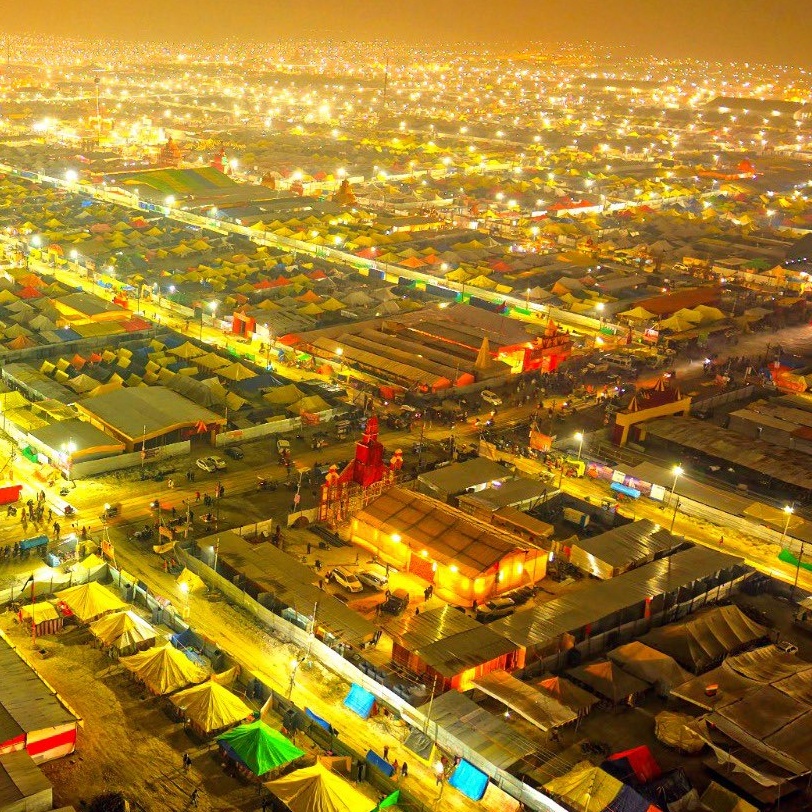
Given the massive influx of pilgrims and tourists, finding suitable accommodation during Mahakumbh2025 is crucial for a comfortable experience. Prayagraj offers a range of options, from luxury hotels to budget lodgings, catering to diverse preferences and budgets. Many of the prominent hotels provide special packages for the festival period, including meals and transportation to the bathing ghats, making it convenient for visitors to navigate the bustling atmosphere.
For those looking for a more immersive experience, tent cities are set up near the riverbanks, offering a unique way to stay close to the action. These tent accommodations vary in comfort levels, from basic to more luxurious options, and often come with shared facilities. Staying in these tent cities provides a great opportunity to connect with fellow pilgrims and share in the collective spiritual experience of Mahakumbh.
It’s advisable to book accommodation well in advance, as spots fill up quickly as the event dates approach. For more information, please visit the Mahakumbh official site. Online platforms and travel agencies often provide package deals that include lodging, meals, and guided tours of the festival, ensuring that visitors can focus on their spiritual journey without worrying about logistics. By planning ahead, visitors can secure a comfortable stay and fully immerse themselves in the vibrant atmosphere of Mahakumbh2025.
Important tips for attending Mahakumbh 2025 in Prayagraj
Attending Mahakumbh2025 can be an overwhelming yet exhilarating experience. To ensure a smooth and enjoyable visit, consider some essential tips. First, be prepared for large crowds and a bustling atmosphere.
- Plan in Advance: Plan your visit in advance to book accommodations.
- Avoid unofficial services: Do not rely on unauthorized guides, unauthorized transportation and unauthorized accommodation service providers.
- Travel light: Travel with light baggage and don’t carry valuables such as a lot of cash, or jewelry.
- Establish a meeting point: Stick with your group and establish a meeting point incase if someone gets lost.
- Respect local customs and traditions: Dress modestly and appropriately keeping in mind the religious and cultural significance of the event.
- Avoid peak times at Sangam: It’s best to arrive early at the bathing ghats to secure a good spot and avoid the rush. During peak times, avoid the ghats to prevent getting caught in stampedes.
- Wearing comfortable, breathable clothing and sturdy footwear will make navigating the festival grounds more manageable, especially when walking long distances or standing for extended periods.
- Stay hydrated and eat wisely: Carrying a small healthy snack and a water bottle can help you maintain your energy levels during busy days and walking long distances.
- Eat freshly prepared food. Food stalls offering a variety of local delicacies will be plentiful, but it’s wise to choose hygienic options to avoid any health issues.
- Maintain hygiene: Maintaining personal hygiene is crucial. Carry hand sanitizers, wet wipes, and face masks for personal hygiene.
- Seek Medical Aid: If you are unwell, seek medical help immediately at first-aid centers available at the site.
- Be Environment Friendly: Be mindful and dispose of trash in designated bins, avoid plastic bags, and opt for eco-friendly alternatives. Avoid littering the riverbanks or polluting rivers.
- Practicing mindfulness and patience will enhance your experience, allowing you to soak in the spiritual energy and connect with fellow pilgrims.
Finally, don’t hesitate to engage with locals and fellow attendees. Sharing stories, experiences, and insights adds to the richness of the Mahakumbh experience. Whether it’s participating in a group meditation or attending a spiritual talk, engaging with the community can lead to meaningful connections and memories that last a lifetime. Embracing the spirit of Mahakumbh will undoubtedly leave you transformed and enriched.
The spiritual experience of Mahakumbh2025
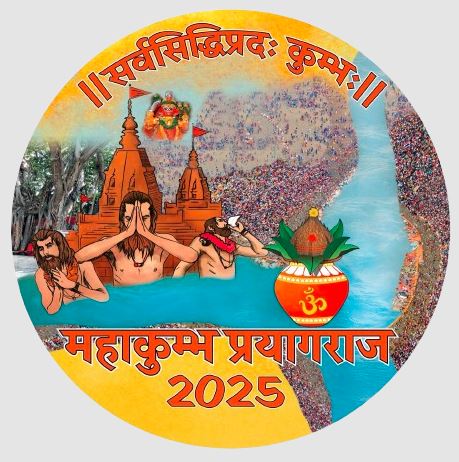
As you prepare for Mahakumbh2025, remember that this grand spiritual gathering is not just an event; it is a journey of self-discovery and shared humanity. The profound rituals, vibrant atmosphere, and diverse array of activities create a unique tapestry of faith and culture. The experience of bathing in the sacred rivers, participating in spiritual discourses, and connecting with fellow pilgrims fosters a sense of unity and purpose that transcends the individual.
Over the centuries, the Mahakumbh has evolved into a cultural phenomenon that showcases the diversity of Indian spirituality. It serves as a kaleidoscope of various sects, philosophies, and traditions, where saints, sadhus, and spiritual leaders come together to share their insights and teachings. The Mahakumbh is not only a time for individual reflection but also a communal celebration of faith, unity, and the shared human experience. The devotees often leave the kumbh mela with a renewed sense of purpose and connection to the divine.
The Mahakumbh serves as a reminder of the timeless quest for enlightenment, encouraging participants to reflect on their spiritual paths and embrace the opportunity for renewal. Whether you identify as a devoted spiritual seeker or a curious traveler, the insights gained and connections made during this festival can leave a lasting impact on your life.
As you embark on this mystical journey, allow yourself to be open to the experiences that await. The Mahakumbh is a celebration of faith, devotion, and the rich tapestry of human experience. Embrace the transformative power of this sacred pilgrimage, and you may find that the true essence of Mahakumbh2025 extends far beyond the physical journey—it is a journey of the soul.
If you enjoyed reading this article, please share it with your family and friends. I would love to hear your feedback in the comment section below. Every comment helps me learn, grow, and provide better content tailored just for you. Let’s make this space even more engaging and enriching!


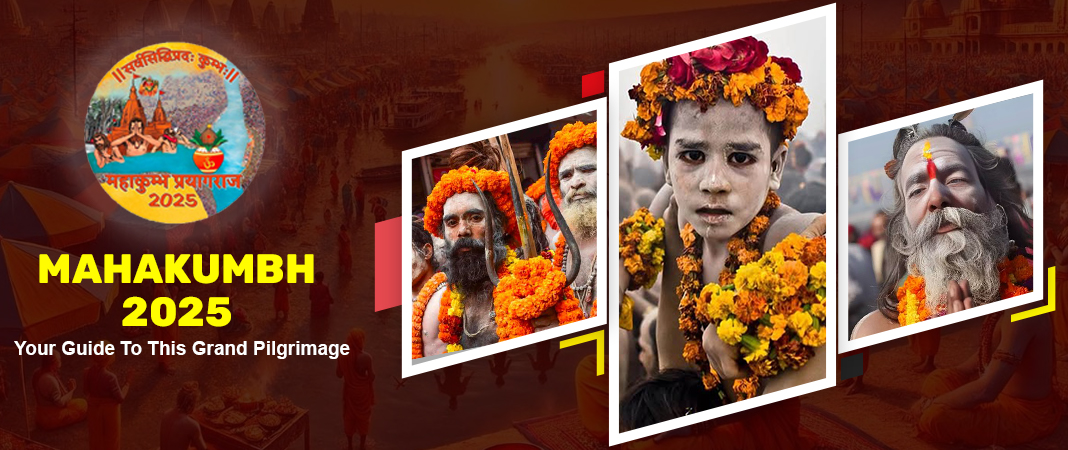
Dear Nimisha,
Was very happy to read your article on Mahakumbh. The article is very lucid, interesting, and informative. Wish I could write that well!
Cheers!
Virbala shah